Avoid: Milk Chocolate

We’re sorry to say that your favorite treat isn’t the best choice. Milk chocolate has a lot of sugar and can easily cause blood sugar spikes even if you eat just a little of it. Just because milk chocolate isn’t on this list doesn’t mean you have to give up chocolate altogether.
And it's not just sugar that you've got to worry about when it comes to eating milk chocolate. In addition to being a high calorie snack, it's also quite high in fat. It might provide your body a bit of much-needed calcium, but the negative health effects definitely outweigh any potential health benefits.
Instead, Eat: Dark Chocolate

Try dark chocolate! Dark chocolate is healthy for you, believe it or not. Studies have shown dark chocolate can improve health and lower your risk of heart disease. This is probably because it gives your body lots of Vitamin K for bone strength, selenium to help prevent coronary heart disease, and antioxidants to keep free radicals out of your body and help prevent cancer.
However, moderation is still vital when it comes to this treat. Dark chocolate can still increase your waistline if you eat too much. That being said, it's still a much smarter choice than milk chocolate--which can expand your waistline too but without any of the good health benefits that dark chocolate provides.
Avoid: Bread Crumbs
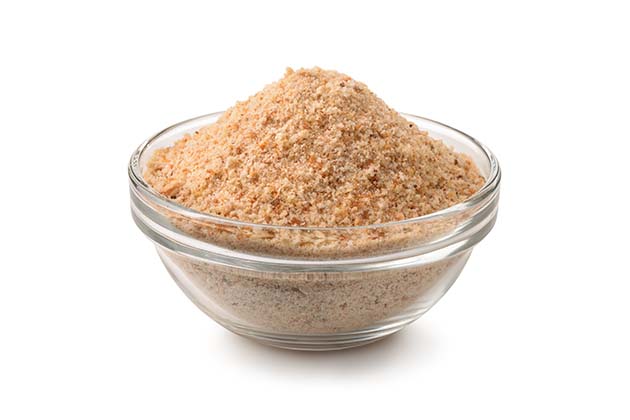
You already know how bad white bread is for you, but sometimes you still ignore it because you’re not consuming very much. The crunchy coating on your crab cakes can actually be making your blood sugar spike. Avoid this high-carb mistake in favor of something more healthy.
However, blood sugar spikes are not the only reason it's smart to avoid bread crumbs. Despite the relatively straightforward name, pre-packaged bread crumbs contain a lot more than just bread--some are even hiding high fructose corn syrup or hydrogenated oils. And both of these things can lead to weight gain or heart problems.
Instead, Eat: Macadamia Nuts

Macadamia nuts are crunchy, buttery, and slightly sweet, making them a delicious alternative to bread crumbs. They’re packed with heart-healthy fats that help keep you fuller longer without affecting your blood sugar. Just crush them up and use them instead of breadcrumbs to coat your fish filets, chicken, or veggies.
But even if you're snacking on this healthy alternative, you still need to keep track of just how much you're eating. Like most other nuts, macadamia nuts are high in calories--with a 1 ounce serving coming in at just over 200 calories. Heart healthy or not, those calories will add up quickly.
Avoid: White Bread
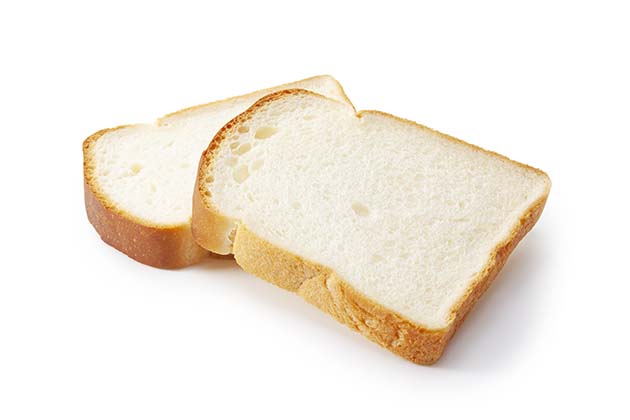
White bread is seriously bad for your body. It can spike your blood sugar quickly and leave you hungry again in a short amount of time. It also has little fiber, so there’s nothing to help transport what little nutrients are actually there.
When it comes to judging foods by the glycemic index, there aren't many that fare worse than white bread. On the index, foods are given a score from 0 to 100 depending on how fast they increase your blood glucose, with 0 being the slowest and 100 being the fastest. White bread comes in with a terrible score of 95.
Instead, Eat: Whole Grain Bread

Instead, replace it with whole grain bread -- just make sure to look at the ingredients list. Whole grain bread should start with “whole grain” over anything else. White bread usually begins with enriched flour, which isn’t good for you. The biggest benefit of whole grain bread is its high fiber content, but the benefits don't stop there.
Whole grain bread is packed with folate for your body’s cells, B6 for proper brain development and serotonin, zinc to boost the immune system, and magnesium, which is crucial for nerve transmission and your metabolism. However, like many of the swaps on this list, calories from bread can add up pretty quickly if you're not keeping track.
Avoid: Mashed Potatoes
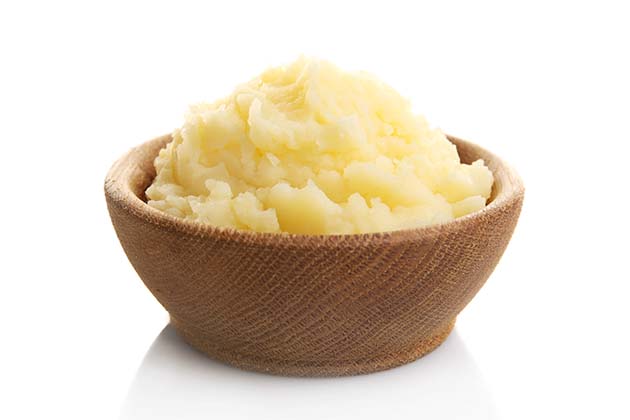
Everyone loves good mashed potatoes, but they can quickly get out of hand. Butter, salt, and cream can make the food bad. Potatoes can be healthy on their own as long as you eat them plain, but those with diabetes should stay away from mashed potatoes. The food can be high in carbs and fat that contribute to weight gain, and fats that can increase your risk of heart disease.
When it comes to nutrition, potatoes prepared with any method aren't that great for you. They are not particularly nutrient dense when compared with other vegetables, and, like we mentioned earlier, when it comes to potatoes, unhealthy things like butter, salt, and cream are never far behind. It's best to just avoid them.
Instead, Eat: Pureed Cauliflower
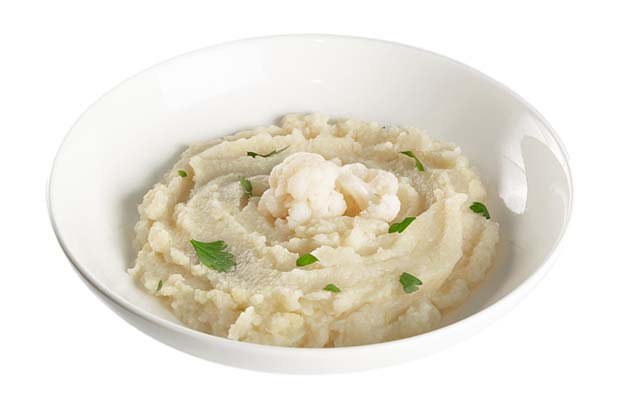
Pureed cauliflower can give you the same texture and almost the same taste. Plus, you get vitamins and minerals from the vegetable. In fact, cauliflower contains 77% of your daily value of vitamin C, which is necessary for energy, maintaining connective tissue, and strong blood vessels and bones. This makes it a great alternative to fruit juices for getting vitamin C as well.
It also has vitamin K to help prevent bone loss, and riboflavin that boosts energy, maintains a healthy metabolism, and repairs the body. And really, you don't have to puree your cauliflower unless you just miss mashed potatoes that much--it's a nutritious side dish no matter how you prepare it.
Avoid: Cereal
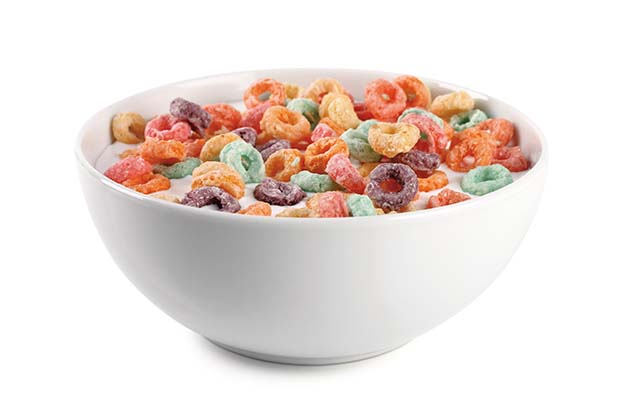
Most cereals at the market are loaded with sugar and very little fiber. It’s easy to see children’s cereals are packed with sugar, but even some “adult” brands can be bad. For example, Raisin Ban has as much as 18g sugar per serving.
If you just have to have your cereal fix in the morning, you're going to need to do a little research about which ones to choose and which ones to avoid. Number one: you should always be reading the ingredient list on the side of the box. Sometimes cereals are marketed as "healthy" but one quick glance at the ingredients lets you know that it's actually loaded with sugar.
Instead, Eat: Steel-Cut Oats

Swapping out your cereal with steel-cut oats is simple and delicious. You can add fresh fruit, nuts, and other ingredients to make it any flavor you want. You can also mix in extracts to add a splash of vanilla or cinnamon. Steel-cut oats are an excellent source of manganese and molybdenum.
Manganese is essential for the absorption of calcium and necessary for the thyroid to work properly. Molybdenum can help improve circulation, regulate cell growth, and protect blood vessels from injury. As long as you're not drowning them with sugar or honey, steel-cut outs should be a much better choice than cereal.
Avoid: Iceberg Lettuce

Iceberg lettuce is easy to eat but has little nutritional value. In fact, iceberg lettuce is 95% water. Sure, this means it's low in calories, but you could be getting more vitamins and minerals by switching it out with something else.
It's not so much that iceberg lettuce is actively bad--it's just that there are so many more nutritious options that are similar to it. Literally any other kind of green you pick--spinach, kale, arugula, etc.--will be more nutrient dense than iceberg lettuce but will still be similarly low calorie.
Instead, Eat: Dark Leafy Greens
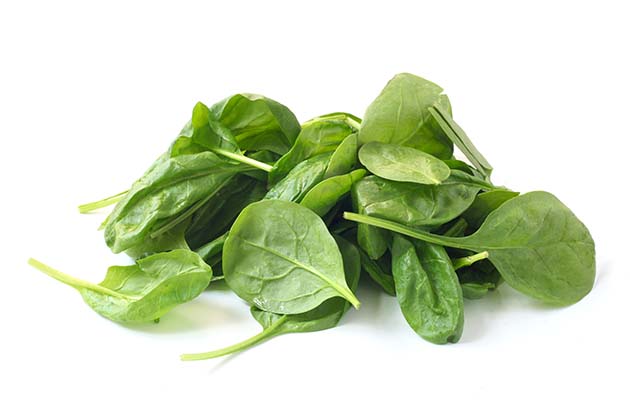
Dark leafy greens are a much better option that could also jazz up the flavor or your salad or sandwich. Picking greens like spinach, romaine, and kale can give you extra nutrients and more bang for your buck. And since unprocessed greens are so low calorie, you don't have to worry about your waistline when you eat them.
Spinach, for example, has tons of vitamin K for bone strength, vitamin A to boost the immune system, iron to promote healthy, oxygenated blood, and tons of fiber that can help keep you regular and absorb every vitamin and mineral in the food. Just remember, things can get unhealthy real quick if you're making creamed spinach!
Avoid: Mayo
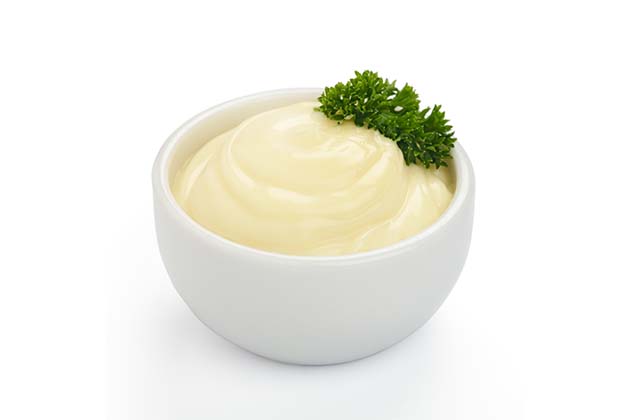
We all love a good slather of mayo on our sandwich or in a dip, but it’s pretty bad for you. One tablespoon has 90 calories, and it’s high in fat. You could buy low-calorie and low-fat mayo, but you could also swap it out for something that’s even better.
For those trying to quit mayo, you don't even necessarily need to go cold turkey at the beginning. Mixing a half serving of mayo with a low-calorie condiment (like mustard) is a step in the right direction. Ultimately though, you're much better off just eliminating it entirely in the long run.
Instead, Eat: Low-Fat Greek Yogurt

Low-fat Greek yogurt is a great mayo replacement. It’s packed with nutrients that can make your sandwich or dip even healthier than before. It’s full of calcium for healthy and strong bones, potassium for your metabolism and muscles, protein to help repair your tissues, and B6 and B12 for a healthy nervous system and extra energy. Plus, it has good bacteria that can help your body digest foods.
But don't forget--always read the nutrition labels! Greek yogurt that's low fat and plain shouldn't give you any problems, but there are plenty of unhealthy varieties to choose from at the grocery store. Watch out for full fat yogurts, as well as yogurt brands that add tons of extra sugar into their products.
Avoid: Mixed Nuts
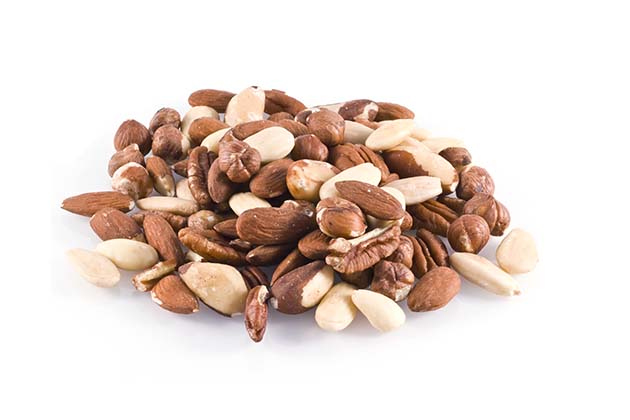
Mixed nuts are a popular snack that’s super easy to grab when you’re hungry. However, the nuts inside can be high in fats and extremely high in salt. This can raise your blood pressure and exacerbate symptoms of diabetes.
If you can't stand to part with your mixed nuts, there are some tips for making this snack a little healthier. You should always opt for unsalted varieties if you can find them. However, there's no getting around the high fat and calorie content--that's just how nuts are. So, always make sure to carefully measure your servings so you don't overeat.
Instead, Eat: Walnuts

Unsalted or lightly salted walnuts are a much better choice if you want a quick snack. These nuts are full of heart-healthy monounsaturated fats and omega-3 fatty acids. Walnuts also contain melatonin, which can help regulate your sleep cycle, vitamin E as an antioxidant to prevent nerve damage, and folate to promote tissue growth and DNA repair.
Additionally, walnuts can be a good source of fiber in your diet too. A diet high in fiber can help reduce blood sugar spikes, improve digestion, and even help prevent damage to your heart and arteries. And sometimes, getting more is as simple as swapping out one kind of nut for another.
Avoid: Flour Tortillas
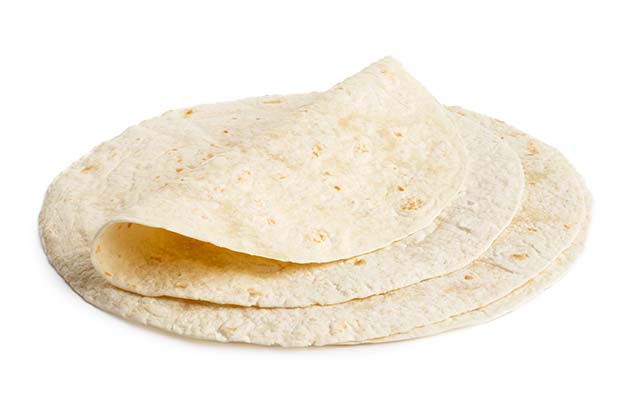
Flour tortillas, much like white bread, are bad for you. They can make your blood sugar spike without keeping you full for a long time, leaving you hungry and sick. There’s also not enough nutritional value in flour tortillas to make them worth eating.
Plus, did you ever wonder how and why flour tortillas are so soft? Unfortunately, it all has to do with the extra fat that's added into them. And watch out--in addition to that hidden fat, some store brands are also hiding a shocking amount of sugar. This is one food to ditch for sure.
Instead, Eat: Corn Tortillas

Corn tortillas are a great alternative to their flour counterparts. Not only are they tastier, but they also have a fraction of the fat that flour tortillas contain. With this swap, you can rest assured that you’ll feel fuller longer and avoid a blood sugar spike.
However, if corn isn't your thing, you can still enjoy tortillas and all the delicious toppings that go on them. Instead, you should opt for whole grain tortillas. Like corn tortillas, whole grain ones are typically healthier than flour tortillas, and they'll give you a much-needed serving of fiber as well.
Avoid: Liquor

Liquor can be dangerous in a lot of different ways. Not only does it lower inhibitions, but it can also severely lower your blood sugar to dangerous levels. There are unnecessary sugars, filled with carbs, and generally next to no nutritional value.
Plain liquors fare a little better than beer, wine, or mixed drinks--but not by much. Considering that blood sugar problems aren't the only issue with alcohol, this is probably one item it's best to just avoid entirely. Or, at the very least, only indulge on rare occasions.
Instead, Drink: Light Beer or Dry Wines
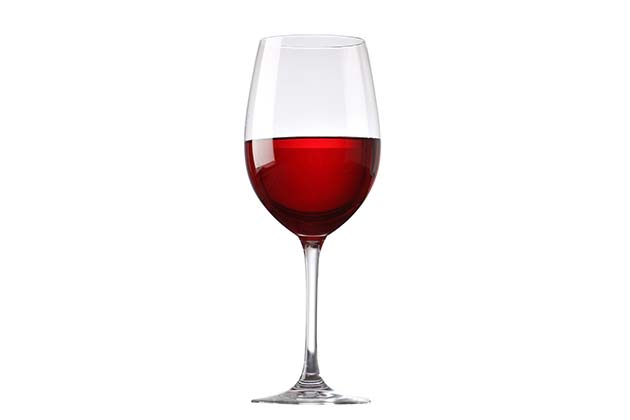
For those rare occasions when you do want to indulge, there are some alcohol options that are better than others. Basically, the less sugar in your drink, the less negative health effects you're going to experience.
Dry wines are a better option than wines that are sweet and fruity--those are just swimming with sugar. Additionally, if you're a beer fan, it's best to go with a light beer. Similarly to dry wines, light beer won't have as much sugar as a heavier beer. Plus, light beers typically have fewer calories than a regular one as well.
Avoid: Chips
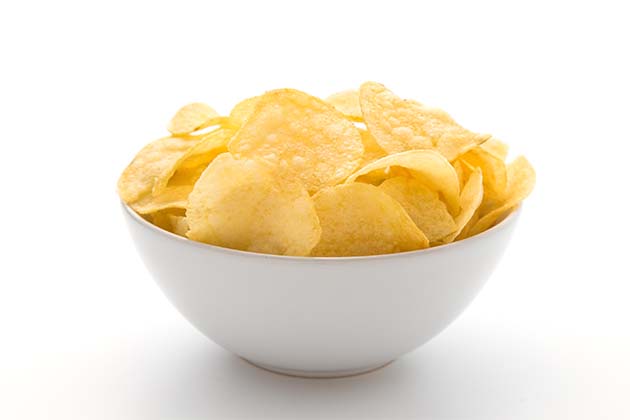
Chips, whether fried or baked, aren’t great for you. Potatoes are one of the least nutritious vegetables out there, and chips are usually heavily salted. Grabbing a bag of baked chips is a start, but there are better snack options out there.
Even if you're going with a "healthier" brand of chips (like baked ones), there's still one major pitfall to avoid. It can be very easy to unwittingly overeat when you've opened a bag of chips, and, no matter how nutritious they might be, those calories will start to creep up on you before you realize what's happened.
Instead, Eat: Plain Popcorn
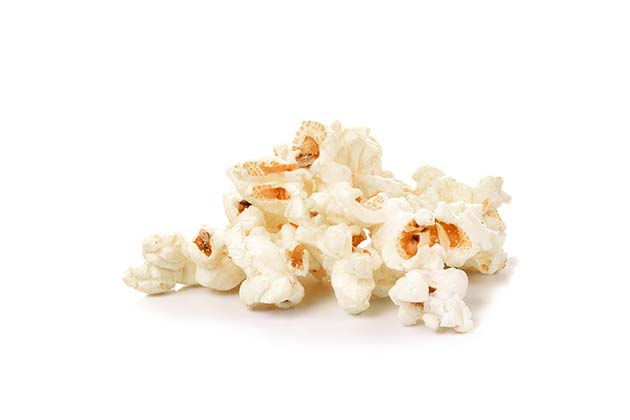
Popcorn is a fantastic example of a guilt-free snack, but you have to be careful. The bagged, microwave popcorn can be just as bad as some chips. Instead, get the unpopped kernels and make your own on the stove top. Try not to add salt, but if you have to, use a light sprinkle.
The fiber in popcorn can help keep you regular and assist your body in absorbing nutrients from other foods. It also has trace amounts of thiamin to provide more energy and maintain proper heart functions, niacin to lower cardiovascular risk, and magnesium, which is crucial for nerve transmission and muscle contraction.
Avoid: Cod

Cod may break some hearts, but there's a reason it made it to this list. We're not saying that it's the worst thing you can do because it is a low-fat fish that has some omega-3 fatty acids that can seriously help those who have diabetes. The only problem is that there are a few drawbacks to this supposedly healthy fish.
Considering most people eat it fried (like in a fish sandwich), it loses pretty much all of its healthy properties. This goes double if you cook the cod in loads of butter. Outside of that, there are better fish options you can add to your diet that will give your body tons more nutrients and vitamins.
Instead, Eat: Salmon
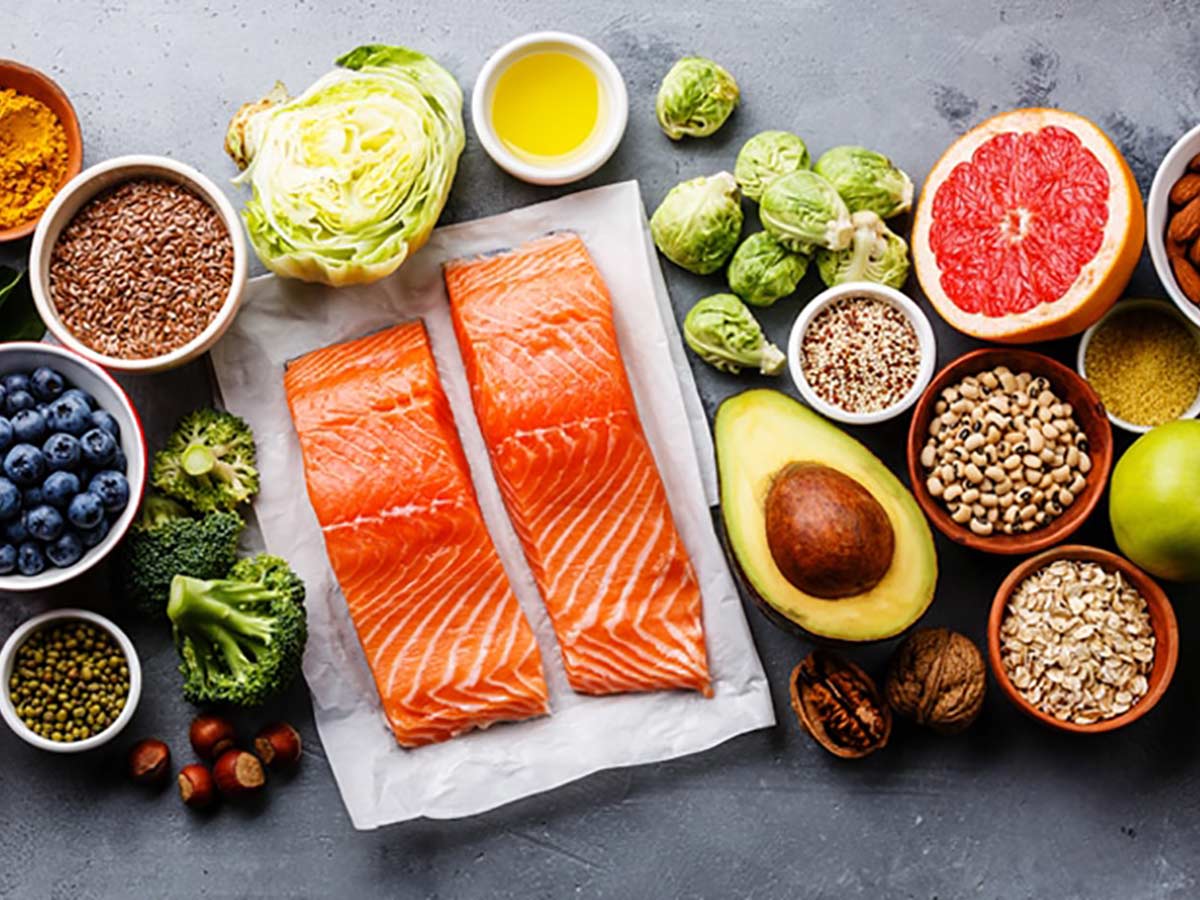
Salmon has more calories than cod, but we promise you that you'll feel fuller longer. While cod is roughly 105 calories for three ounces, salmon isn't far off at 182 calories. It also has way more omega-3 fatty acids. Cod sits at 171 mg — respectable, but it doesn't touch salmon's 2,208 mg omega-3 fatty acids.
Cod has more magnesium, but salmon beats it in every other place. Salmon has 45% of your daily recommended value of niacin and vitamin B-12. It also has 40% of your daily recommended value of B-6, 25% DV for riboflavin, and 15% DV for thiamine. Cod can't even touch those stats, so throw in some salmon instead.
Avoid: Nutella

This one is hard to quit, but Nutella is awful for everyone (including those who have diabetes). The first ingredient in Nutella is sugar, and after putting a tablespoon in your mouth, you wouldn't need any stats to tell you that. Because it's the first ingredient, it's what the nut "butter" is made of most.
After that, you have palm oil, which is extremely high in saturated fats. This can raise your LDL cholesterol while increasing your risk of heart disease. It also doesn't do anything good for your blood sugar. Overall, Nutella is terrible for the majority of people out there. Definitely avoid it when possible.
Instead, Eat: Peanut Butter
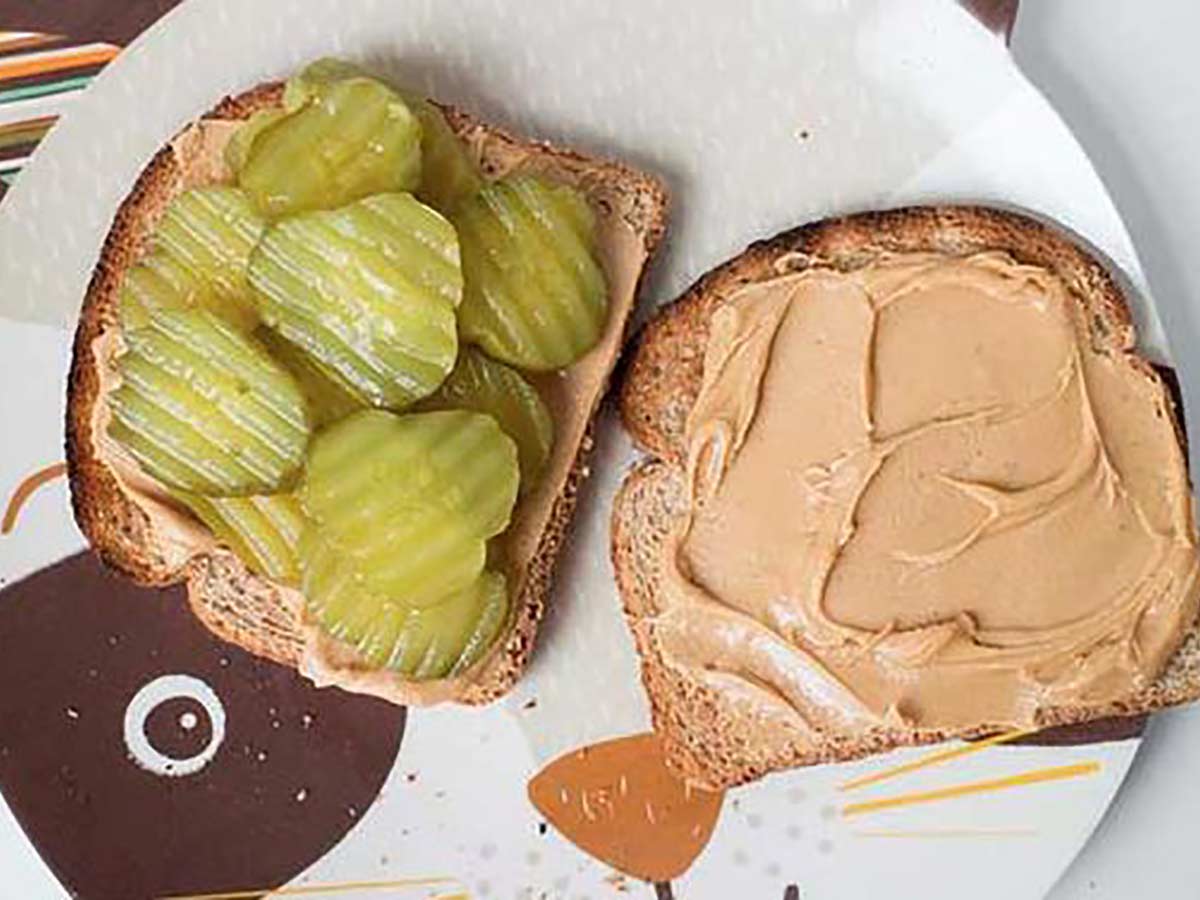
Peanut butter has a bit of a bad rap, but we're here to defend it. In moderation, peanut butter is a much better choice than Nutella for the sole fact that it has much less sugar and saturated fats. That isn't all, however. Peanut butter has shown to actually help people who have diabetes.
A study from the Harvard School of Public Health looked at the diet patterns of over 65,000 women. The researchers found that low glycemic index foods like peanut butter can actually reduce the risk of developing diabetes while also reducing the risk of spiking sugar in those who already have it.
Avoid: Fries

We're sorry to say that there isn't much nutritional use in fries, whether it's made from regular potatoes or sweet potatoes. Actually, sweet potato fries can be worse than the regular stuff! Either way, shortly after eating it, you'll see a fast spike in your blood sugar (which is what we want to avoid).
Potatoes (no matter the type) are very high in carbs. On top of that, the delicious starchy root vegetable has been fried in vegetable or peanut oil which ups the number of toxic compounds that promote inflammation. We're not saying to avoid potatoes, but to eat them sparingly.
Instead, Eat: Okra

Southerners will rejoice and tell you everything delicious about okra, but for everyone else, we'll explain why it's on this list. Okra is absolutely packed with nutrients including vitamins A, C, K, and B6. It also has a massive amount of fiber that will keep you fuller longer. That's not even all.
Okra has tons of magnesium and is low in carbs. Super vegetable? You decide. Roasted or air-fried okra is a much better choice than any fries you'll eat. Just avoid fried okra that's been breaded and dunked in saturated-fat dense oil. Roasted will taste much better, anyway.
Avoid: Soda

An ice-cold soda can be refreshing on a hot summer day, but you may not feel too great when it jacks up your blood sugar. Diet soda can be an option, but studies show many people drink more diet soda because it’s “good for you,” but it can actually have the opposite effect.
Whether you're dealing with the high sugar content of a full flavored soda or the questionable artificial sweeteners from a diet soda, this is one drink that's always causing problems. Your best bet is to simply eliminate it entirely--which we know is probably easier said than done!
Instead, Eat: Flavored Water or Tea

Instead, grab flavored water. You can flavor your own water with fresh fruits like lemon, strawberries, and blueberries for a healthy drink with nutrients. You can also drink tea without sugar. Both of these drinks are much healthier than soda and won’t cause sugar spikes.
Most teas are full of antioxidants which can help prevent various cancers. Some even have vitamin C for an immune boost and vitamin A for healthy heart, lungs, and kidneys. But be on the lookout for any refined sugars that could have been added in to bottled varieties. It always pays to read the ingredients!
Avoid: Candy

Of course, candy is bad for you. It’s high in sugar and can cause cavities among other things. Anyone with diabetes knows this fact. Sugar-free candy is another option, but it still has no nutritional value for the calories you’re consuming. You can switch it out for something better!
Plus, sugar free candy is not without its downsides. While it may have fewer calories because of no sugar, the things that replace the sugar can be even worse. Depending on what brands you buy, some consumers have found that the artificial sweeteners in sugar free candy can lead to some pretty intense, ahem, "intestinal distress."
Instead, Eat: Fruit
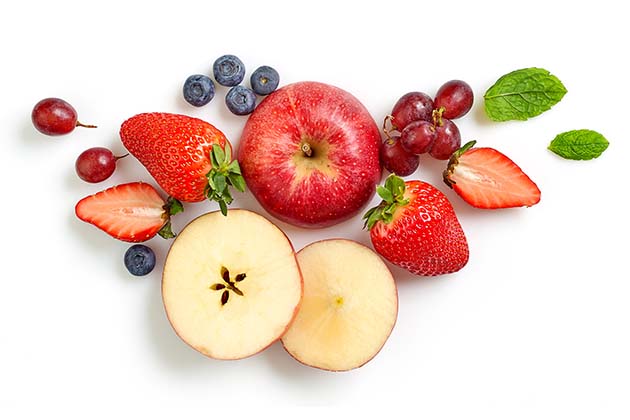
Fresh fruit can be a great snack when you have a sweet tooth. Nearly every choice is filled with nutrients that can help your body, and the fiber will help digest the natural sugars to prevent a blood sugar spike. However, you should always do your research about specific fruits to get a better idea of just how they will affect your blood sugar.
Each fruit has different vitamins and minerals, but most have vitamin C, which can improve energy levels and your immune system. They’re also high in folate for cell growth, and potassium to help maintain healthy blood pressure. Fruits are some of the most nutrient dense foods on the planet, and it would be a huge mistake to keep them out of your diet.
Avoid: Butter
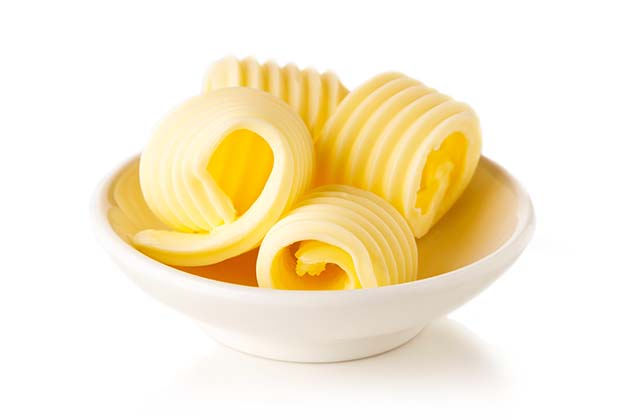
Butter is a cooking staple for most people, but it can be a bad option for someone with diabetes. The fats in butter can increase your waistline and make symptoms of diabetes worse, especially for those that are already overweight. Even though it has trace amounts of protein, butter is made up of 80% fats.
It's true, butter is a sugar free food--which means it probably won't lead to any sudden blood sugar spikes. But its other negative nutritional effects still make it worth avoiding. Heart disease can be just as serious as diabetes, and when it comes to butter, that's a much bigger risk.
Instead, Eat: Avocado

Almost every recipe that calls for butter can be replaced with avocado. One avocado has tons of healthy fats that may decrease your pant size and improve your heart. Naturally, avocado also tastes great spread on toast. But don't forget--just because avocado is healthier than butter doesn't mean it's a miracle food. It's still a quite calorie dense option!
Avocado is exceptionally high in vitamin E, which can help prevent cell damage. It also provides 11% of your daily fiber, tons of folate for cell growth, potassium to maintain healthy blood pressures, and lutein which can help prevent macular degeneration. As long as you're not overeating, avocado should be a welcome, nutritious part of your diet.
Avoid: Full Fat Dairy
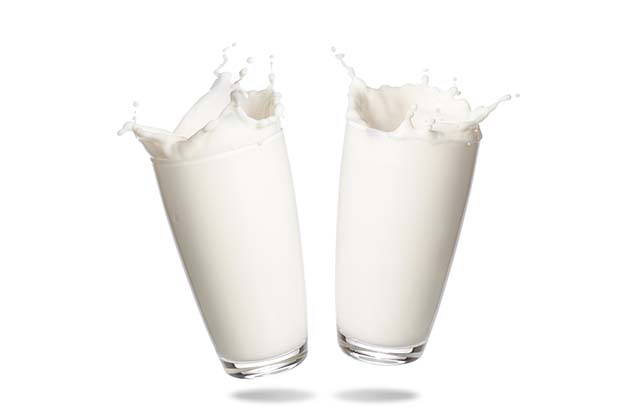
Whole milk and full-fat cheeses increase your risk and symptoms of diabetes. It’s true that full-fat dairy can be healthy for you and contain nutrients that could help your body, but it isn’t an even trade for someone with diabetes.
The high calorie content of full fat dairy products make overeating and weight gain a risk--both of which can worsen a case of diabetes. Plus, you have to think about all the unhealthy foods that typically go along with full fat dairy, like mashed potatoes or processed cereals. It's an unhealthy accomplice to other unhealthy foods.
Instead, Eat: Reduced Fat Dairy
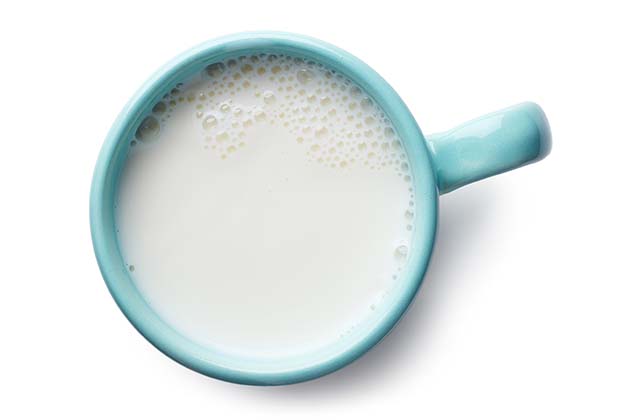
On the other hand, studies have shown that reduced-fat dairy can help lower the risk of diabetes and even improve the condition. Low-fat cheeses and 1% milk can be just as good and work as a replacement for any full-fat dairy product. They're still able to bringing in that delicious creamy flavor but without all the fat and calories.
Even though it’s low-fat, 1% milk still has tons of vitamin D and calcium for strong bones, folate for cell growth, and vitamin B12 for extra energy. Additionally, low fat dairy products also contain nutrients (potassium, magnesium, and calcium) which have been shown to reduce the risk of high blood pressure.
Avoid: Beef

Sadly enough, beef can be bad for you. Many cuts are marbled and have a high content of fat that can clog arteries and make you feel worse over time. While you could choose leaner cuts, there are better options on the chopping block. Overall, beef is known for having lower amounts of vitamins compared to other meats like turkey and chicken.
If you want to keep beef in your diet without making your diabetes worse, always opt for lean cuts of meat. This includes any kind of beef that has less than eight grams of fat and 100 calories per 1 ounce serving. So, chuck steaks and tenderloin are in, while things like prime rib need to be cut out.
Instead, Eat: Fish or Chicken
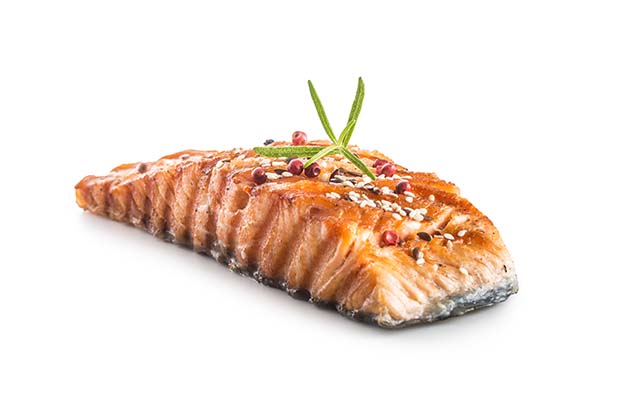
Fish provides heart-healthy omega-3 fatty acids. It’s best to stay away from white fish like tilapia and cod, and instead purchase salmon and trout. One filet of salmon can contain 40g of protein for healthy muscles, potassium for nerve impulses and heart regulation, and selenium to help prevent coronary heart disease.
Chicken, on the other hand, is much cheaper and can provide 38g of protein per serving. Skinless, white meat cuts of chicken are best, as these will have the fewest calories and fat per serving. And it should go without saying, but we're gonna say it anyway--no, fried chicken is not a healthy option, diabetes or not!
Avoid: Fruit Juice
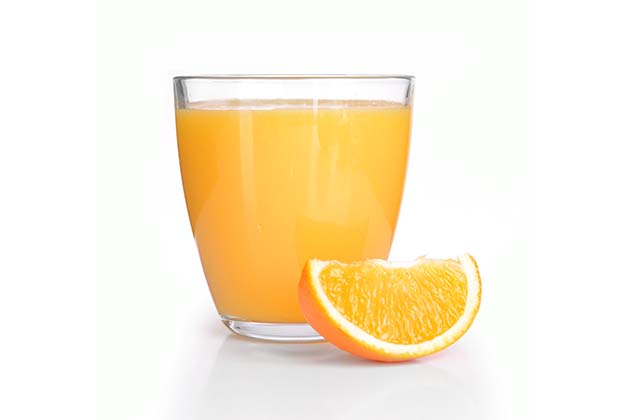
Fruit juice may seem like an easy way to get your daily nutritional value, but it can actually have the opposite effect. Fruit juice is mostly absorbed as sugar, which can increase your blood sugar quite quickly. Thanks to the sugar content, it’s also high in carbohydrates, which can rapidly increase your pant size.
It’s also extremely low in fiber since the good stuff has been removed. Fruit juice is one of those items that's peddled as healthy, but that's all just marketing. There's nothing worse than thinking you're making smart, healthy decisions about your diet only to learn that the exact opposite is true. Now you can avoid that heartbreak with fruit juice!
Instead, Eat: Whole Fruits

If you want some fruit, just eat the whole fruit. The fiber helps digest the nutrients, which are otherwise barely absorbed as the juice is digested so quickly through your body. Depending on the fruit, you’re sure to get tons of vitamins and minerals. Fruits are full of vitamin C for energy, folate for cell growth, and fiber that helps keep you regular.
However, you still need to keep an eye on the sugar content of whole fruit. Some varieties can affect your blood sugar more than others, so take to keep track of just how much you're eating in one sitting. That being said, whole fruit is still light years ahead of fruit juice when it comes to health.
Avoid: Muffins
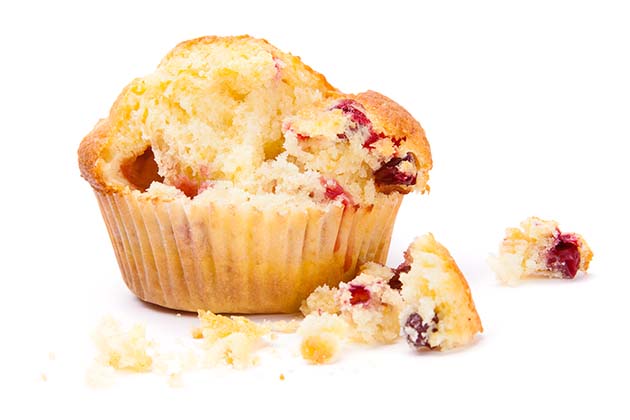
Muffins contain high amounts of saturated fats. Eating healthy fats is important for maintaining healthy cells, store energy, and metabolize vitamins, but too much is a very bad thing. Muffins also tend to have higher sugar content, even if they don’t contain fruit.
In all honesty, you're going to run into these problems with most tasty, sweet baked goods--muffins are by far from the only culprit here. Opting for whole grain muffins can be a step in the right direction, but all that fiber won't magically erase the tons of sugar they put in them as well!
Instead, Eat: Bagels

Bagels have almost 75% less saturated fat than muffins, making them a good swap. By ordering a bagel with your morning coffee instead of a muffin, you’re starting your day off on the right track. You’ll be eating less saturated fat and more heart-healthy monounsaturated fats, which will keep you healthy.
Unlike doughnuts, bagels are traditionally baked instead of fried, which already makes them a much better choice than the alternative. And if you choose the right variety of bagel, it's also likely to have a healthy serving of fiber throw in for good measure. Just watch what you're spreading on that thing!
Avoid: Flavored Instant Oats
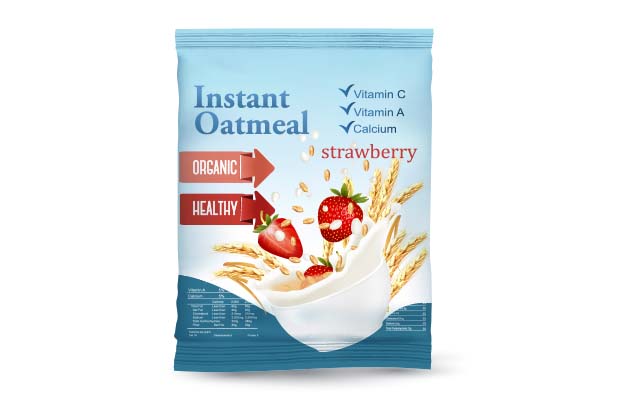
Instant oats will never be the healthiest option. You should always go for regular oats if you can, but if you’re insistent on keeping your instant oats you should at least avoid the flavored variety. The flavored packs can contain as much as 300 mg of sodium and have tons of added sugars that spike blood glucose levels.
They might be more convenient than traditional oats, but that's about the only good thing in their favor. Whole oats flavored with fresh fruit is going to be a much healthier (and tastier) option than the pre-packaged stuff packed with sugar and artificial flavors. Real oatmeal is worth the extra effort, we promise!
Instead, Eat: Plain Instant Oats
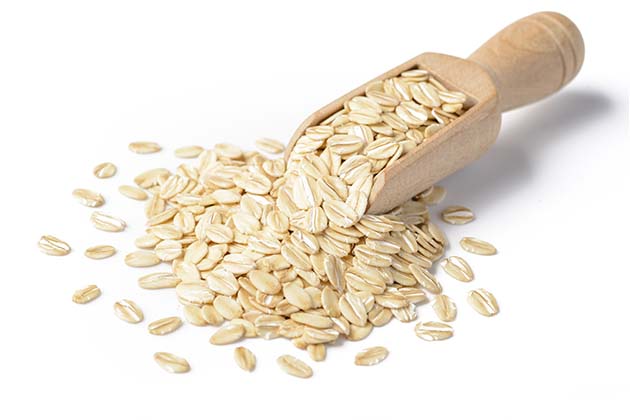
In addition to high amounts of sodium, flavored packages often contain high amounts of sugar. If you choose plain oats instead then you can flavor them with fruit for natural, healthy sweetness without an excessive amount of sodium or sugar!
And oats are definitely something you want to include in your diet, since they've got all sorts of positive health benefits. Their high fiber content can help improve digestion and reduce cholesterol levels, they're rich in antioxidants, and, most importantly of all for diabetics, they can help regulate your blood sugar.
Avoid: Brown Rice

Brown rice is tasty, but there are more fibrous options. If you're looking to really amp up your nutrition value, swap it out. With only 1.5 grams of fiber in every serving, brown rice isn’t the best option.
All that being said, when it comes to some of the foods to avoid on this list, you could do much worse than brown rice. Even though it might not be the most nutritious food out there, it's definitely a step up from more refined grains, like white rice. Just make sure you're steaming it or using another healthy preparation method!
Instead, Eat: Quinoa

Quinoa is trending in the food industry right now for many good reasons. It contains many essential vitamins and nutrients like magnesium, vitamin E, and antioxidants, but is also high in fiber. Quinoa has twice the amount of fiber as brown rice, making it the perfect alternative in any dish.
However, if you're not used to a diet high in fiber, you may want to start slow on the quinoa. Adding massive amounts of dietary fiber to your meals in a short period of time can lead to some pretty unpleasant digestive effects, like excess gas. If you slowly incorporate it into your diet, though, those problems shouldn't occur.
Avoid: White Potatoes
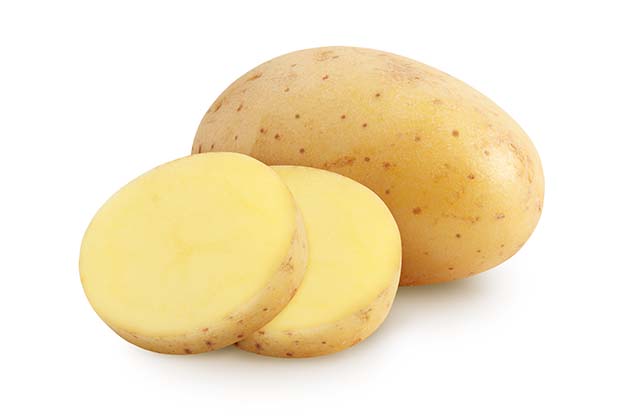
White potatoes are bad about raising your blood sugar because the starch is processed in your body the same way sugar is. In fact, white potatoes can cause it to spike even faster than table sugar. Those mashed potatoes aren’t worth the headache and nausea you’ll have to deal with later.
If you can't stand the thought of living without potatoes, there is some hope, however. Instead of opting for white potatoes, go for a variety that has a darker colored skin, like red or purple. As long as you're eating the potato skins along with the rest of the potato, you'll receive the nutrient benefits often found in brightly colored vegetables.
Instead, Eat: Jicama
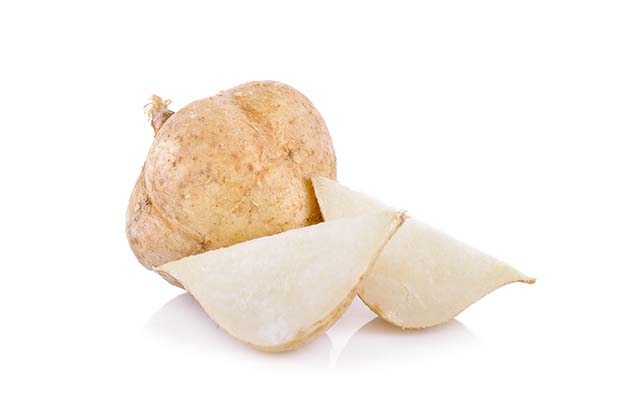
Replace white potatoes with jicama, and you’ll never look back. Jicama is low on the glycemic index, and it has tons of fiber. On top of that, it has the prebiotic inulin, which promotes a healthy gut. As if that weren’t enough, it’s also an excellent source of vitamin C and other antioxidants.
Jicama is not a food that many Americans eat on a regular basis, so trying to prepare one might seem intimidating at first. However, they're actually much easier to cook than you might think. Like potatoes, these vegetables can be prepared in a number of ways, including sauteed, roasted, or baked.
Avoid: Pasta

Who doesn’t love pasta? It's a popular comfort food that can be used in many different ways. Unfortunately, this tasty food is also loaded with carbs, which can cause inflammation and elevate your blood sugar levels. Luckily, there are many options for you if you’re ready to cut out pasta but don't want to sacrifice flavor.
This, however, is another instance on this list where some varieties of a food are better than others--not all types of pasta are created equally. While it might be best to completely avoid pasta, choosing varieties that are made of whole grains or vegetables is going to be a much better choice than traditional, refined pasta.
Instead, Eat: Spaghetti Squash

Whole grain pasta and cauliflower are great options for replacing white pasta, but you should also try spaghetti squash. It’s easy to cook and can be used for many things, making it a great ingredient for a cook of any skill level. It’s especially good for spaghetti because it shreds in a way that looks like long, thin noodles.
In terms of health benefits, spaghetti squash is the clear winner. It has fewer calories per serving than traditional pasta, and it's also a good source of both vitamins A and C. It may not be the most fiber filled vegetable out there, but a serving of spaghetti squash will also provide you with about two grams per serving.
Avoid: Processed Cheese

The amount of processing that American cheese goes through should be enough to put anyone off eating it, but it’s still a popular choice. To make matters worse, a single slice of American cheese contains 300 mg of sodium, which can drastically increase your blood pressure.
Additionally, when you go with process cheese, you're not always getting the best bang for your buck. Despite what the package might say, processed cheese is never actually 100% real cheese--and in some instances, that ratio can dip as low as 50%. Those additional fillers don't taste nearly as good as real cheese, and some could even lead to health problems.
Instead, Eat: Swiss Cheese

Swiss cheese is a much healthier alternative to American cheese. With only 25 mg of sodium, it’s easy to see how! Something as simple as using a different cheese can make a big difference when it comes to blood pressure. Just opt for Swiss cheese on your sandwich at the deli or buy it pre-sliced for use at home.
While cheese can be a healthy part of a diabetic diet, it's important to do your research. Not all cheeses affect your blood sugar in the same way. You should always check the glycemic index for the specific variety you bought to see what it could potentially do to you blood glucose levels.
Avoid: Smoothies
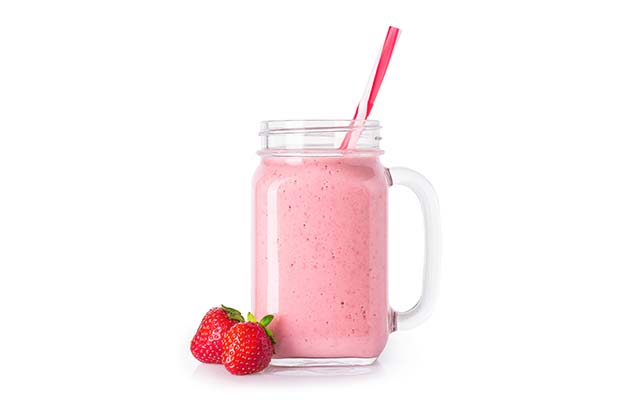
Smoothies are super high in sugar, fruit juices, fats, and dairy. All of those ingredients are bad for diabetics for various reasons. Sugar and the fruit juices go hand in hand and cause a sharp spike in blood sugar while being chock full of calories. Saturated fats in milk can also worsen insulin resistance, so best to avoid dairy in smoothies too.
If you just really are craving a smoothie, your best bet is to make one yourself at home and keep the ingredients minimal and healthy. Blended frozen fruit with a little water or low-fat milk is going to be so much better for you than the smoothies you find for sale at stores or restaurants.
Instead, Eat: Whole Fruit

Whole fruit is full of healthy sugars, fiber, and tons of vitamins and nutrients that can help keep your blood sugar at a healthy level. Fruits like apples are fat-free, sodium-free, and chock full of fiber and vitamins. There are hundreds of different fruits out there to be tried, surely you can find something to enjoy.
However, you should always keep in mind that even though the sugar in fruit may be from a natural source, it's still sugar. When you overeat, even with something as healthy as fruit, it can cause problems for your blood glucose levels if you're ingesting too much of the sweet stuff.
Avoid: Full Sugar Ice Cream

Creamy, cold, and sweet, who doesn’t love some ice cream on a hot summer day? Or just whenever you’re craving something super sweet. Well, full-sugar ice cream is, of course, not good for diabetics. Like many sugary treats, ice cream is loaded with hundreds of calories, carbs, sugar, and fat. It’s ultimately just best to avoid it altogether.
It's technically possible to find low-sugar varieties that you can enjoy in moderation, but sometimes that is easier said than done. Considering that a serving of ice cream is only a half cup, it can be hard to resist the siren song of the freezer when you're eating so little of something so tasty.
Instead, Eat: Sugar-Free Sorbet or Sherbet

Unlike ice cream, sorbets are chock full of healthy nutrients. Compared to full-sugar ice creams, sorbets have way fewer calories, fat, sugar, and carbs, so trade in super sugary ice cream for a sweet sorbet.
However, like all the healthy swaps on this list, moderation is still key. Just because something is healthier than something else doesn't mean you should eat it all day every day. The calories, sugar, and fat from sorbet might not add up as quickly as those of ice cream, but they will catch up with you eventually.
Avoid: Processed Lunch Meat
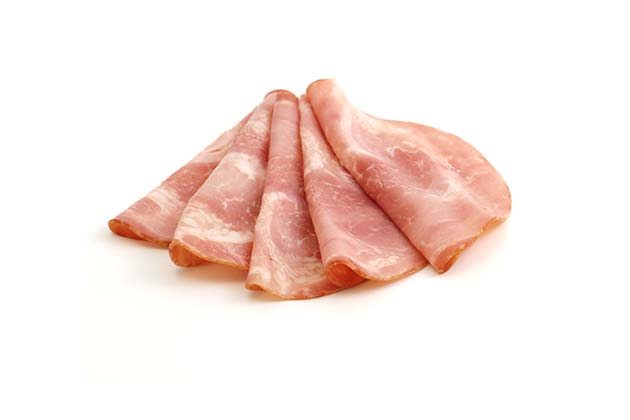
Processed lunch meats like salami and bologna are super bad for diabetics. Lunch and deli meats may not have a lot of sugars, but they are definitely full of sodium, calories, and fat. Even if you don’t have diabetes, processed lunch meats have been linked to heightening your risk for developing type 2 diabetes.
Sure, lunch meat can provide your body with some much needed protein, but it's just not worth it when you consider all the other unhealthy things that are found in there besides protein. Some medical research studies have even found a possible connection between eating processed meat, like lunch meat, and the risk of colon cancer.
Instead, Eat: Fresh Meat
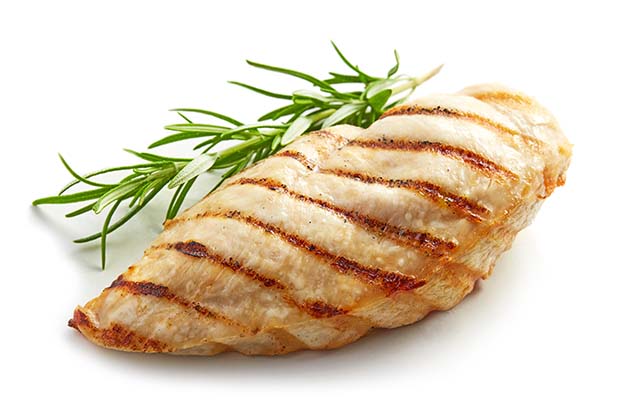
Rather than reaching for the bologna, reach for a much leaner fresh meat like turkey. Fresh, lean meats have way less sugar, calories, and salt while offering super high amounts of vitamins and nutrients like fiber, vitamin b-12, iron, and protein. Tearing up freshly cooked meat may seem like more of a hassle, but it's much healthier.
However, be careful about which meats you choose in general! Fresh chicken or turkey will be a much better choice than something fattier and more calorie dense like many cuts of beef. That being said, they're all pretty much a step up from the processed, packaged lunch meats you'll find at the grocery store.
Avoid: Hamburger Buns
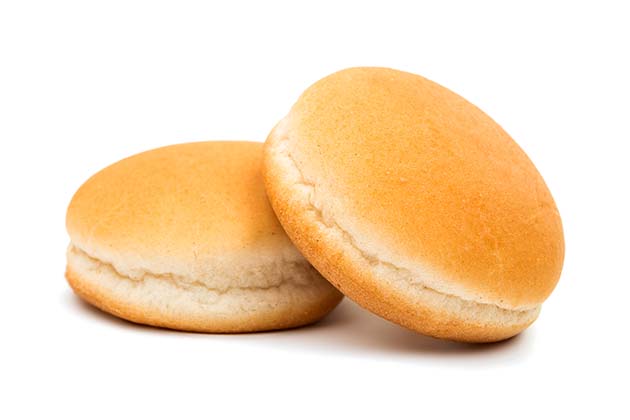
You probably already know this, but avoiding carbs is a key aspect of diabetic diets. Avoiding carbs, however, can be a major struggle, especially if you’re a person that really likes sandwiches. Bread buns have a ton of carbs and sugar that can be super bad for your body. Best to avoid them.
There are some more healthier bun options out there these days, like whole grain varieties. However, at the end of the day, even whole grain buns are full of carbs, and when you're trying to stick to a diabetic diet, that can spell trouble. Buns are just a really challenging food to get right.
Instead, Eat: Lettuce Leaves
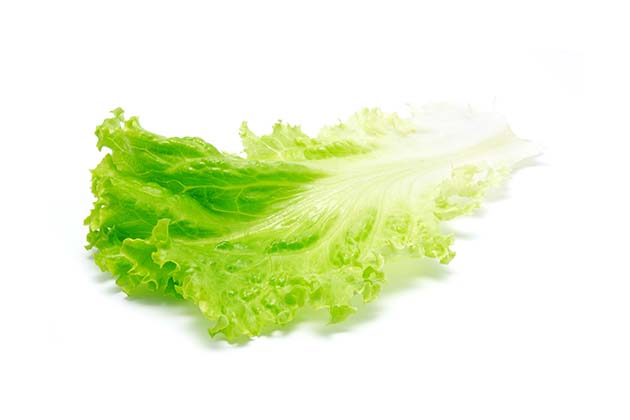
Lettuce and cabbage are both fantastic bread substitutes that contain absolutely zero carbs and sugar. Plus, you get all the awesome benefits of having a wrap to hold your food with no spiked blood sugar levels. A win-win!
There's no getting around the fact that nothing will ever properly replace delicious bread, but this is one of the more palatable and nutritious bread substitutes that you'll be able to find. It can take a little practice to perfect the lettuce wrap technique, but once you do, you might not even remember that bread is a thing.
Avoid: Dried Fruit

Dried fruit isn’t as bad as some of the other ‘avoid’ foods on this list, it’s still at least a little bit healthy. However, it is to be avoided for a reason. Dried fruits are super high in calories, sugar, and salt. There are also way fewer vitamins and nutrients in dried fruit than in fresh fruit.
Dried fruit is also much easier to eat too much of. Yes, it's technically fruit, a food which often has lower calories than other foods. However, all those calories have been condensed into a smaller serving when you dry the fruit. So, they add up faster than with fresh varieties.
Instead, Eat: Fresh Fruit
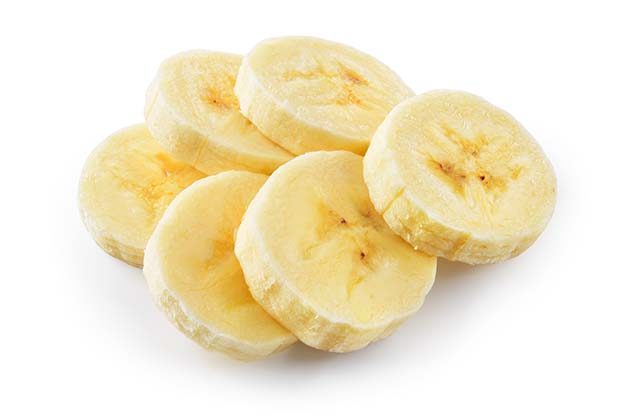
Nothing compares to the original, and that applies to fruit too. Thanks to the fact that fresh fruit hasn’t been dehydrated like the dried fruit, the sugar content is lower, and there are very few calories. There are, however, a ton of vitamins, fiber, and folic acid. So if you’re craving something sweet, reach for some delicious fresh fruit.
When choosing fresh fruit to add into a diabetic diet, you want to include plenty of varieties that have high fiber, low sugar, or, ideally, both. This includes tasty choices like apples, pears, blueberries, and kiwi. And remember--whole fruit is going to be so much better for you than fruit juice.
Avoid: White Rice

Rice usually isn’t the worst thing in the world, but if you choose an instant or quick-cooking rice, you inherently get less nutritional value. White rice is high on the glycemic index and causes large blood sugar spikes, not to mention it’s low in fiber and high in carbs and calories.
While it might taste better than brown rice, you're not getting nearly as many nutrients as you could be when you choose white rice. In the process of converting rice from brown to white, the hard, fibrous outer hulls are stripped from the grains. Unfortunately, that's where most of the nutrients in rice reside.
Instead, Eat: Cauliflower Rice
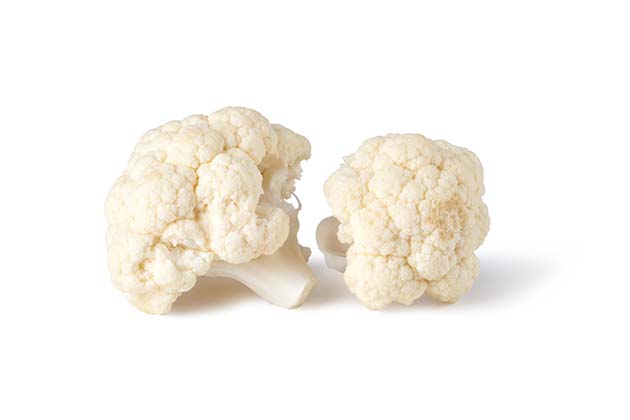
Craving rice, but need something a little more diabetes-friendly? Cauliflower rice is perfect for you! Cauliflower is among the healthiest vegetables you can get, and it’s loaded with fiber and vitamins. Plus, it has way fewer calories and carbs.
You can buy pre-packaged cauliflower rice at the store, but this is also one food you can make at home. Simply toss your cauliflower into a food processor or blender and pulse until it reaches roughly the consistency of rice. Additionally, you can go even more low tech with your cauliflower rice and create it using a cheese grater or meat tenderizer.
Avoid: Fried Foods
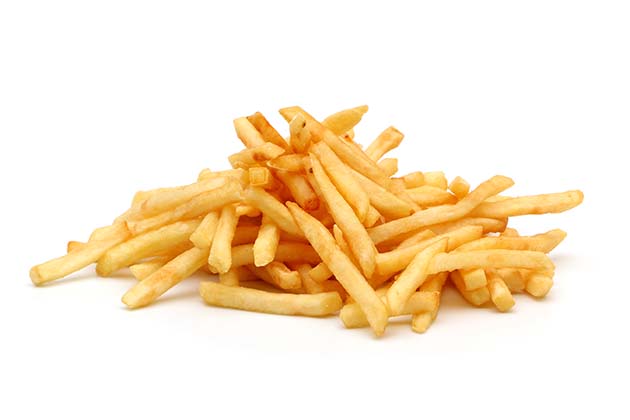
Someone with diabetes should stay away from anything fried. Fried foods are high in trans-fats that can cause heart disease in no time. They’re also high in calories that add unwanted weight in a short amount of time.
Air fryers have become popular over the last few years, and, if we're going to get technical about things, this is definitely a healthier alternative to deep frying foods. That being said, whether air fried or deep friend, any food coated with a rich batter or bread crumbs is going to be on the unhealthy side.
Instead, Eat: Baked Foods
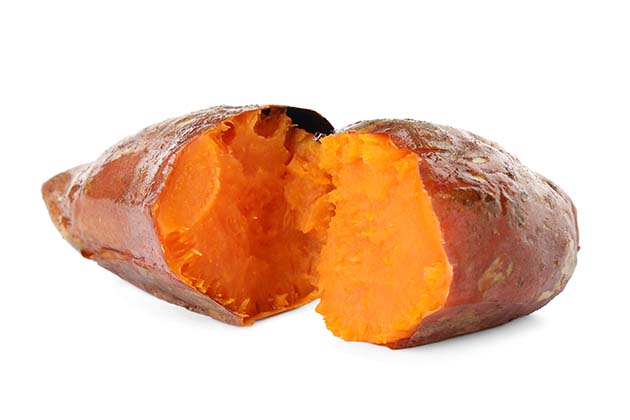
Anything can be fried can also be baked. Chicken, vegetables, and coconut shrimp are just a few of the things you can throw in the oven instead of hot grease. Baked foods lack the trans-fat that can cause heart disease and other health issues. They can also help decrease the amount of fat, which can help you lose weight.
Finally, baked foods almost always have lower calories. It may be sad to give up all those deep fried delicacies, but with the right cooking techniques, foods baked in the oven can be just as tender and delicious as anything dipped in oil. Give it a try--you'd be surprised how good it can taste!
 Author
Ron Winkler
Last Updated: July 02, 2025
Author
Ron Winkler
Last Updated: July 02, 2025